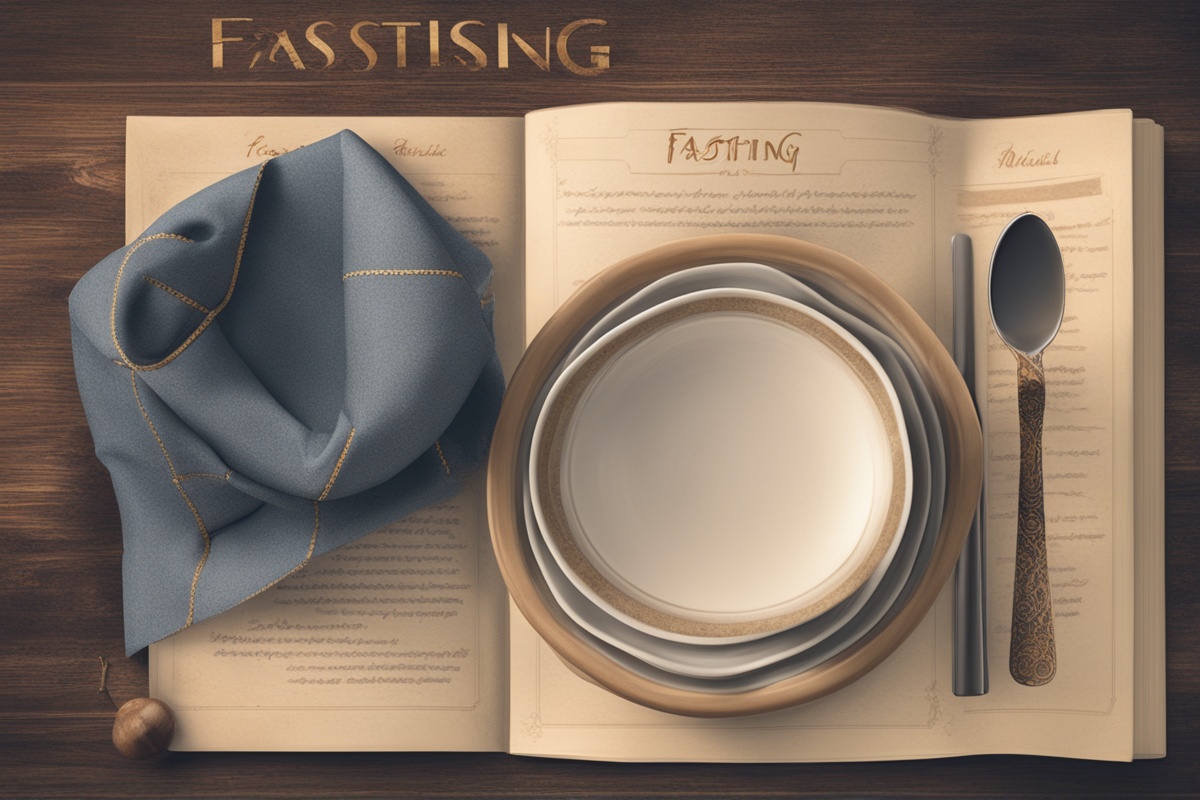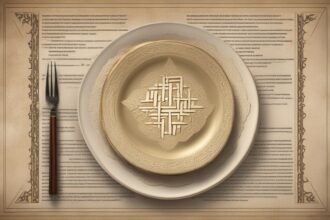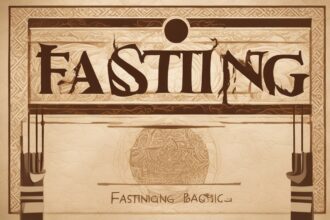Hey there, fellow health enthusiasts! If you’ve ever wondered about the roots of fasting or how this age-old practice has evolved into a modern wellness trend, you’re in the right place. Fasting, at its core, is more than just skipping a meal—it’s a tradition steeped in history, spirituality, and science. In this comprehensive fasting guide, we’ll journey through the fascinating history of fasting, uncover its cultural significance, and explore how it’s become a powerful tool for health today. Whether you’re a beginner looking for a fasting tutorial or a seasoned faster seeking deeper insights, let’s dive into the past and present of this transformative practice together.
The Ancient Origins of Fasting: A Spiritual and Survival Tool
fasting isn’t a new fad—it dates back thousands of years, long before anyone thought to write a fasting guide or create a trendy diet plan. In ancient times, fasting was often a necessity rather than a choice. Early humans didn’t have access to a 24/7 food supply, so periods of food scarcity shaped our biology to adapt to feast-and-famine cycles. Beyond survival, fasting also emerged as a spiritual practice across various cultures. In ancient Egypt, priests fasted to prepare for religious rituals, believing it purified the body and soul. Similarly, in ancient Greece, philosophers like Socrates and Plato practiced fasting to enhance mental clarity and self-discipline. These early practices laid the groundwork for fasting as both a physical and metaphysical journey.
Fasting in Religious Traditions: A Universal Practice
One of the most profound aspects of fasting history is its deep connection to religion. Almost every major faith has incorporated fasting into its teachings, often as a way to demonstrate devotion, seek enlightenment, or practice self-control. For instance, during Ramadan, Muslims fast from dawn to sunset for a month, focusing on spiritual reflection and community (Esposito, 2003). In Christianity, Lent involves fasting or abstaining from certain foods for 40 days to honor Jesus’ sacrifice. Meanwhile, in Hinduism and Buddhism, fasting is tied to purification and meditation, often practiced during festivals or specific lunar phases. These traditions highlight how fasting transcends cultures, uniting people through a shared act of discipline and mindfulness. If you’re exploring a fasting plan inspired by spiritual roots, understanding these origins can add deeper meaning to your practice.
The Evolution of Fasting in Medicine: From Hippocrates to Modern Science
Fast forward a few centuries, and fasting began to catch the attention of medical pioneers. Hippocrates, often called the “Father of Medicine,” famously said, “Instead of using medicine, rather, fast a day,” believing that fasting could help the body heal itself (Hippocrates, circa 400 BCE, as cited in Shelton, 1978). This idea persisted through the Middle Ages and Renaissance, where fasting was prescribed for various ailments. By the 19th and 20th centuries, scientific interest grew, with studies exploring fasting’s effects on metabolism and disease. Today, research shows that intermittent fasting—a popular approach in any modern fasting tutorial—can improve insulin sensitivity, reduce inflammation, and even promote longevity (Mattson & Wan, 2005). It’s incredible to see how an ancient practice has been validated by cutting-edge science!
Fasting in the Modern Era: A Wellness Revolution
Let’s talk about fasting today. What was once a religious or survival mechanism has exploded into a global health movement. Intermittent fasting (IF), time-restricted eating, and extended fasts are buzzwords in the wellness community, and for good reason. Studies suggest that fasting can support weight loss, improve brain function, and lower the risk of chronic diseases like diabetes and heart disease (Patterson et al., 2017). But it’s not just about the science—fasting has become a lifestyle. People are drawn to its simplicity and flexibility, making it a key part of any fasting for beginners program. Whether you’re following a 16:8 fasting schedule (16 hours fasting, 8 hours eating) or trying a 24-hour fast once a week, the modern era offers endless ways to adapt this practice to your life.
Practical Tips for Starting Your Fasting Journey
If you’re new to fasting or looking to refine your approach, having a solid fasting guide can make all the difference. The key is to start slow and listen to your body. Fasting isn’t a one-size-fits-all solution, so finding what works for you is crucial. Below are some practical tips to help you ease into fasting with confidence:
- Start with a shorter fast, like the 12:12 method (12 hours fasting, 12 hours eating), to get your body accustomed to longer periods without food.
- Stay hydrated—drink plenty of water, herbal teas, or black coffee during fasting windows to curb hunger and support detoxification.
- Break your fast gently with nutrient-dense foods like vegetables, lean proteins, or healthy fats to avoid digestive discomfort.
- Avoid overeating during eating windows; focus on balanced meals to maximize the benefits of your fasting plan.
- Consult a healthcare provider before starting, especially if you have medical conditions or are on medication.
Common Challenges and How to Overcome Them
Let’s be real—fasting isn’t always a walk in the park. Even with the best fasting advice, you might face hurdles like hunger pangs, irritability, or low energy. But don’t worry; these challenges are normal, especially when you’re starting out. Here are some common issues and strategies to tackle them, ensuring your fasting experience is as smooth as possible:
- Hunger: Distract yourself with light activities like walking or reading, and remember that hunger often passes in waves.
- Fatigue: Ensure you’re getting enough sleep and consider adjusting your fasting schedule to align with your natural energy levels.
- Social Pressure: Explain your fasting goals to friends and family, or plan social meals during your eating windows.
- Cravings: Keep busy and sip on zero-calorie drinks to manage cravings for sweets or snacks.
Remember, fasting is a personal journey. What works for one person might not work for another, so experiment with different approaches under the guidance of a fasting tutorial or expert advice. Over time, your body will adapt, and those initial challenges will likely fade. Plus, the potential benefits—like improved mental clarity and better metabolic health—are worth the effort (Longo & Mattson, 2014).
As we wrap up this deep dive into fasting history, I hope you’re as inspired as I am by how this practice has stood the test of time. From ancient spiritual rituals to modern scientific validation, fasting has proven its worth as a tool for both body and mind. Whether you’re drawn to it for health reasons, personal growth, or curiosity, this fasting guide is just the beginning. Start small, stay consistent, and don’t hesitate to seek support from communities or professionals as you craft your own fasting plan. Here’s to embracing the wisdom of the past and the promise of a healthier future—one fast at a time!
References
- Esposito, J. L. (2003). The Oxford Dictionary of Islam. Oxford University Press.
- Longo, V. D., & Mattson, M. P. (2014). Fasting: Molecular mechanisms and clinical applications. Cell Metabolism, 19(2), 181-192. https://doi.org/10.1016/j.cmet.2013.12.008
- Mattson, M. P., & Wan, R. (2005). Beneficial effects of intermittent fasting and caloric restriction on the cardiovascular and cerebrovascular systems. The Journal of Nutritional Biochemistry, 16(3), 129-137. https://doi.org/10.1016/j.jnutbio.2004.12.007
- Patterson, R. E., Laughlin, G. A., LaCroix, A. Z., Hartman, S. J., Natarajan, L., Senger, C. M., … & Gallo, L. C. (2017). Intermittent fasting and human metabolic health. Journal of the Academy of Nutrition and Dietetics, 115(8), 1203-1212. https://doi.org/10.1016/j.jand.2015.02.018
- Shelton, H. M. (1978). Fasting Can Save Your Life. Natural Hygiene Press.






